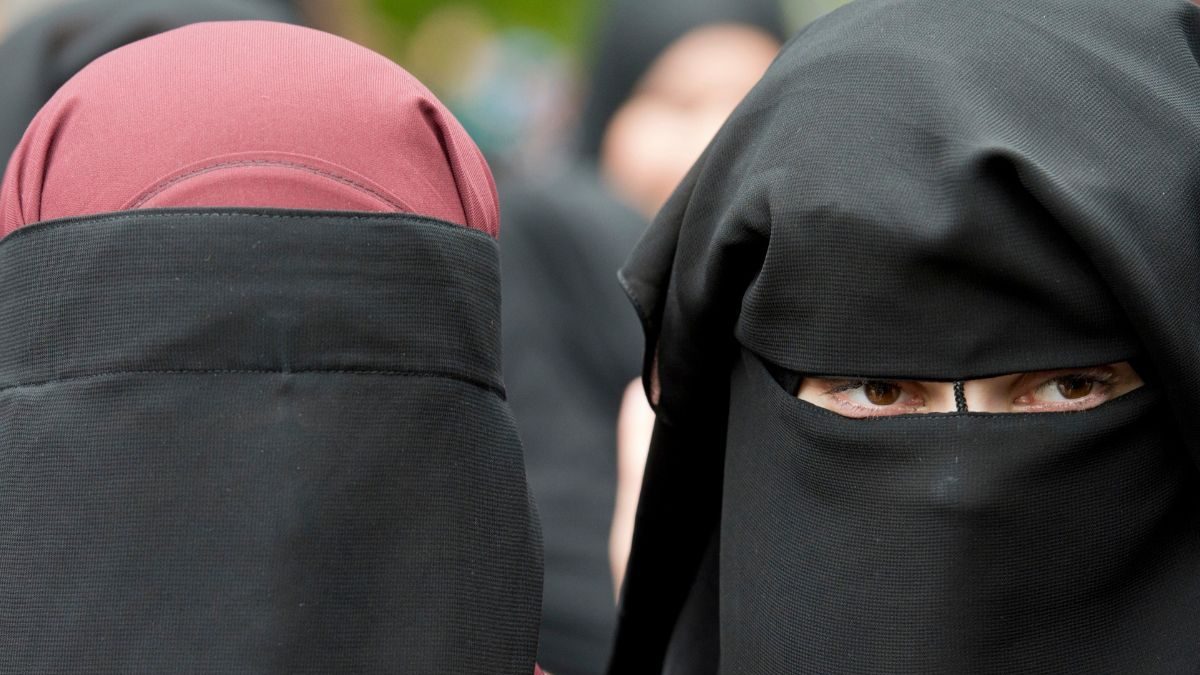Last Updated:January 02, 2025, 10:52 IST
The ‘anti-hijab’ proposal was put forward by the right-wing Swiss People’s Party, which campaigned with slogans such as ‘stop extremism’. Official results of a 2021 referendum showed 51.2% voted in favour of the ban

Switzerland’s Lower House of Parliament in 2023 cemented the burqa ban into federal law and set a fine of up to 1,000 francs for violators.
(File Photo: AP)
From January 1, Switzerland has officially banned burqas, hijabs or any other face coverings in public. Swiss voters in a 2021 referendum had approved forbidding niqabs and burqas.
The Lower House of Parliament in September 2023 cemented the ban into federal law and set a fine of up to 1,000 francs (about $1,100) for violators.
Why Has Switzerland Taken This Initiative?
The “anti-hijab” proposal was put forward by the right-wing Swiss People’s Party (SVP) which campaigned with slogans such as “stop extremism”. Official results of the referendum showed 51.2% voted in favour of the ban.
In Switzerland, citizens participate in the country’s system of direct democracy by regularly voting on various issues in national or regional referendums.
According to research by the University of Lucerne (in German), almost no-one in Switzerland wears a burka and only around 30 women wear the niqab. About 5% of Switzerland’s population of 8.6 million people are Muslim, most originating from Turkey, Bosnia and Kosovo.
Without directly mentioning the word ‘Islam’, the referendum was aimed at stopping violent street protesters from wearing masks. The vote was popularly known as “burqa ban”.
It is not the first time Islam has figured in a Swiss referendum. In 2009 citizens went against government advice and voted to ban the building of minarets — a proposal also put forward by the SVP which said minarets were a sign of Islamisation.
What Does The Ban Say?
The new law prohibits covering the nose, mouth and eyes in both public spaces and private buildings accessible to the public, though it does allow for some exceptions.
However, there are some exceptions – the ban does not apply to facial coverings worn for health reasons, such as medical masks or during cold weather; and coverings are permitted in places of worship, for artistic performances, or in advertising.
The law also allows coverings personal protection in cases where face mask is necessary for freedom of expression or assembly, as long as public order is maintained, and the responsible authorities approve such instances.
The facial coverings, notably, are still allowed on planes and in diplomatic or consular premises, as well as in certain sacred sites.
Controversy Over The Ban
Walter Wobmann, chairman of the referendum committee and an SVP lawmaker, had described Muslim face coverings as “a symbol for this extreme, political Islam which has become increasingly prominent in Europe and which has no place in Switzerland”.
After the referendum results were declared in 2021, a leading Swiss Islamic group had called it “a dark day” for Muslims. “Today’s decision opens old wounds, further expands the principle of legal inequality, and sends a clear signal of exclusion to the Muslim minority,” the Central Council of Muslims said in a statement, as mentioned in a report by BBC.
Amnesty International spoke out against the ban, calling it “a dangerous policy that violates women’s rights, including to freedom of expression and religion”.
The wearing of Islamic veils in public has been a controversial topic in other European countries. France banned wearing a full face veil in public in 2011 while the Netherlands, Denmark, Austria and Bulgaria have put in place full or partial bans on wearing face coverings in public.
How Other European Countries Have Forbidden Burqas
A European court last year had ruled that member states can prohibit their employees from wearing signs of religious relief.
The hearing was of a Muslim employee of the eastern Belgian municipality of Ans who was told she could not wear a headscarf at work. The woman, who works as head of an office and is not in a public-facing role, launched a legal challenge.
In 2021, the court ruled that women could be fired from their jobs for refusing to remove their hijab if they work in a job that deals with the public.
France has a strict ban on religious signs in state schools and government buildings, arguing that they violate secular laws. The headscarf and other “conspicuous” religious symbols were banned in state schools in 2004.
In August, the French government said state school pupils would be banned from wearing ‘abayas’, loose-fitting full-length robes worn by some Muslim women.
Austria, Belgium, Bulgaria, Denmark, Italy (in some localities), the Netherlands (in public places) and Spain (in some parts of Catalonia) have also banned burqas. Germany, however, remains divided on burqas and niqabs, with some states banning them in schools and public places, and others fearing it could hinder integration.
According to a March 2022 report by the Open Society Justice Initiative — a group of lawyers advocating for human rights — such bans came into force after US policymakers declared a global war on terror in the wake of the 9/11 terror attacks, giving rise to suspicions around Muslims due to their attire.
“The idea that Muslims as a group were the new ‘enemy within,’ with beliefs and practices reflecting values and norms inferior to those of Europe, acquired legitimacy across the political spectrum,” the authors of the report wrote.
The report also mentioned that in most EU countries bans and rules on face veils and headscarves have been promoted primarily by nationalist and far-right political parties. The report also noted that five EU states — Croatia, Cyprus, Greece, Poland and Portugal — have never publicly debated bans on head or face coverings.
